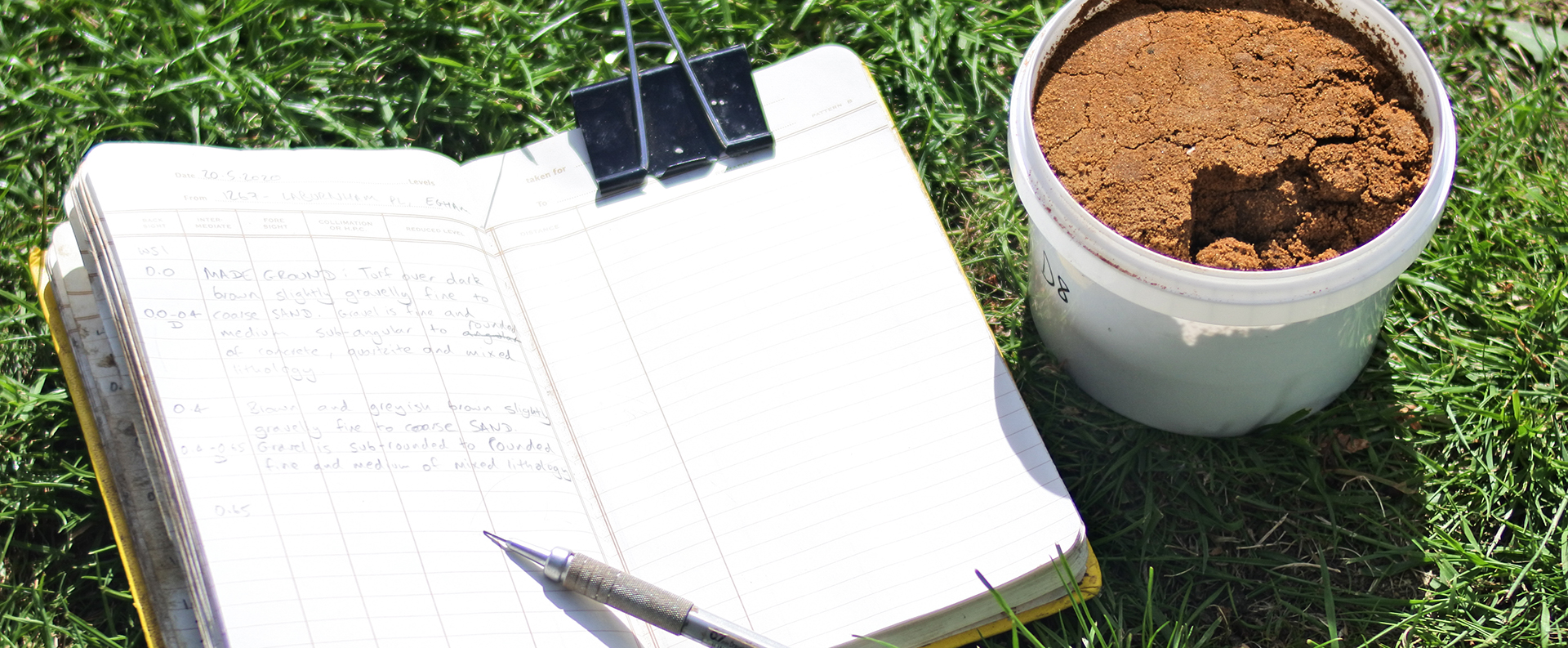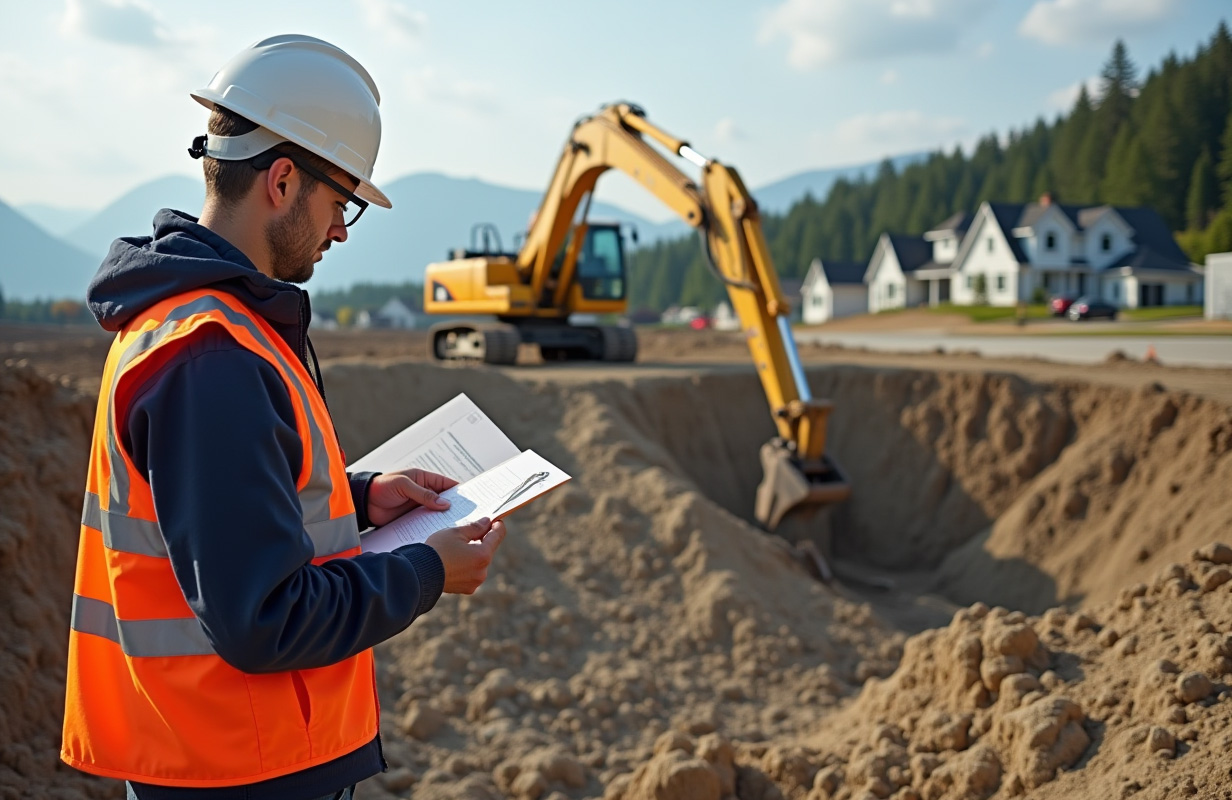Geotechnical Engineer Description: What to Get out of These Professionals
Geotechnical Engineer Description: What to Get out of These Professionals
Blog Article
Examining the Interdisciplinary Nature of Geotechnical Design and Its Impact on Ground Enhancement and Foundation Layout
By incorporating understandings from structural, ecological, and geological disciplines, geotechnical engineers are geared up to attend to complicated dirt habits and site-specific difficulties. This joint strategy not just improves the efficacy of methods such as soil stabilization and dynamic compaction however additionally makes sure that jobs adhere to sustainability concepts.
Introduction of Geotechnical Engineering
Geotechnical engineering is a crucial branch of civil design that focuses on the behavior of planet products and their interaction with structures. This technique encompasses the research study of groundwater, rock, and dirt, intending to comprehend their residential or commercial properties and how they affect the performance of civil design jobs. Geotechnical designers assess the mechanical and hydraulic actions of these materials to guarantee the stability and safety of frameworks such as buildings, bridges, and preserving wall surfaces.
The scope of geotechnical design includes website examinations, soil tasting, and testing, along with analysis of dirt technicians and rock auto mechanics. Designers use advanced strategies to assess ground conditions, determine potential hazards, and design reliable ground enhancement options. This might entail methods such as dirt stabilization, grouting, and using geosynthetics, which improve the strength and toughness of the ground.
Furthermore, geotechnical design plays a crucial duty in foundation design, determining proper structure types based on dirt features and packing conditions. By integrating strenuous screening and evaluation, geotechnical designers add significantly to the sustainability and resilience of infrastructure, making sure that frameworks can withstand environmental and functional tensions gradually.
Trick Interdisciplinary Relationships

Furthermore, ecological design plays an important function in examining the effect of geotechnical activities on the bordering ecological community. This partnership is essential for establishing sustainable methods that decrease environmental degradation during excavation or ground improvement processes.
Additionally, the combination of geotechnical design with geology boosts the understanding of subsurface problems, assisting in even more accurate site characterizations (geotechnical engineer description). This relationship help in risk evaluation, specifically in locations susceptible to landslides or seismic task, thereby educating danger reduction strategies
Lastly, innovations in modern technology have actually caused interdisciplinary cooperation with data science and geoinformatics. These fields contribute to enhanced modeling and analysis methods, enabling extra precise forecasts of soil actions under various conditions. Thus, the interconnectedness of these techniques enriches geotechnical engineering, promoting development and efficiency in foundation layout and ground renovation.
Ground Improvement Methods
Ground improvement techniques are crucial approaches utilized to boost the design residential properties of soil, thereby raising its load-bearing capability and stability. These strategies are especially important in locations where all-natural soil problems are inadequate for sustaining architectural loads or where ecological elements might endanger soil honesty.
Common ground renovation approaches include dirt compaction, which increases thickness and lowers void areas, and grouting, which involves injecting materials into soil to load voids and bind fragments with each other - all about geotechnical engineering. Other methods include the installment of dirt nails and anchors, which supply added support, and making use of geosynthetics to reinforce soil frameworks. Deep mixing approaches, such as soil-cement columns, can also substantially boost the stamina and rigidity of weak dirts
Additionally, vibrant compaction and vibro-replacement techniques are commonly used to enhance soil residential or commercial properties sitting. These approaches can mitigate concerns connected to negotiation and liquefaction, especially in seismic locations. By utilizing a mix of these innovative techniques, geotechnical engineers can effectively deal with site-specific difficulties, making certain that the structure systems will perform properly under prepared for loading problems, hence adding to general job success.
Foundation Design Considerations
Effective structure layout factors to consider are crucial for the longevity and stability of frameworks. A properly designed structure must properly support the load of the building while accommodating soil problems, ecological variables, and possible adjustments with time. Trick aspects consist of dirt bearing ability, negotiation attributes, and groundwater problems.
Recognizing the dirt profile through geotechnical examinations is important, as it informs the selection of structure type-- be it superficial, deep, or specialized methods such as stack foundations or mat foundations. The anticipated lots, consisting of online, dead, and environmental loads, have to be properly computed to make sure the foundation can stand up to prospective failing systems, such as moving, reversing, or excessive negotiation.
In addition, factors to consider for frost depth, seismic task, and possible soil liquefaction in seismic zones are essential. Furthermore, drainage and moisture control need to be integrated right into the structure layout to alleviate issues connected to hydrostatic stress and soil disintegration.
Partnership amongst designers, engineers, and geotechnical experts is vital to create a comprehensive foundation style that not just meets regulatory needs but additionally guarantees the lasting performance and safety and security of the structure. Eventually, comprehensive preparation and ingenious options are necessary to deal with the complexities intrinsic in structure design.
Study and Finest Practices

One noteworthy instance research study involves using deep soil blending in a skyscraper building task in a seismic zone. This method dramatically improved the dirt's stamina and stability, permitting a safer and more reliable foundation system (all about geotechnical engineering). The project highlighted the value of choosing appropriate ground enhancement methods based on site-specific conditions, consisting of soil kind and loading needs
One more example is the application of dynamic compaction for boosting the bearing capacity of weak soils underneath an industrial center. This approach successfully lowered settlement problems and improved overall website performance, demonstrating the effectiveness of integrating traditional engineering exercise with contemporary technology.
Best methods stemmed from these instance research studies emphasize the requirement of comprehensive site examinations, partnership among multidisciplinary groups, and the unification of innovative modeling devices. By embracing these lessons, geotechnical designers important source can maximize structure designs and ground enhancement strategies, inevitably resulting in much safer and extra sustainable construction results.
Final Thought
In conclusion, the over here interdisciplinary nature of geotechnical design significantly enhances ground improvement and structure design. By integrating concepts from numerous design disciplines, tailored techniques are developed to address specific challenges associated with dirt homes and environmental impacts. This collaborative approach not just makes certain optimal foundation stability and safety but also promotes sustainable construction techniques. Continued expedition of these interdisciplinary connections will further progress the area, resulting in ingenious solutions that respond successfully to advancing engineering demands.
The range of geotechnical engineering includes website investigations, dirt sampling, and testing, as well as evaluation of dirt technicians and rock mechanics. The relationship between geotechnical design and structural engineering is specifically critical, as the performance of frameworks is greatly influenced by dirt behavior and buildings.Common ground improvement methods include dirt compaction, which raises density and reduces void rooms, and grouting, which involves injecting materials right into dirt to load voids and bind bits with each other. Other strategies include the setup of soil nails and supports, which supply added assistance, and the use of geosynthetics to strengthen soil frameworks. A properly designed structure must adequately support the lots of the structure while suiting dirt conditions, environmental elements, and possible adjustments over time.
Report this page